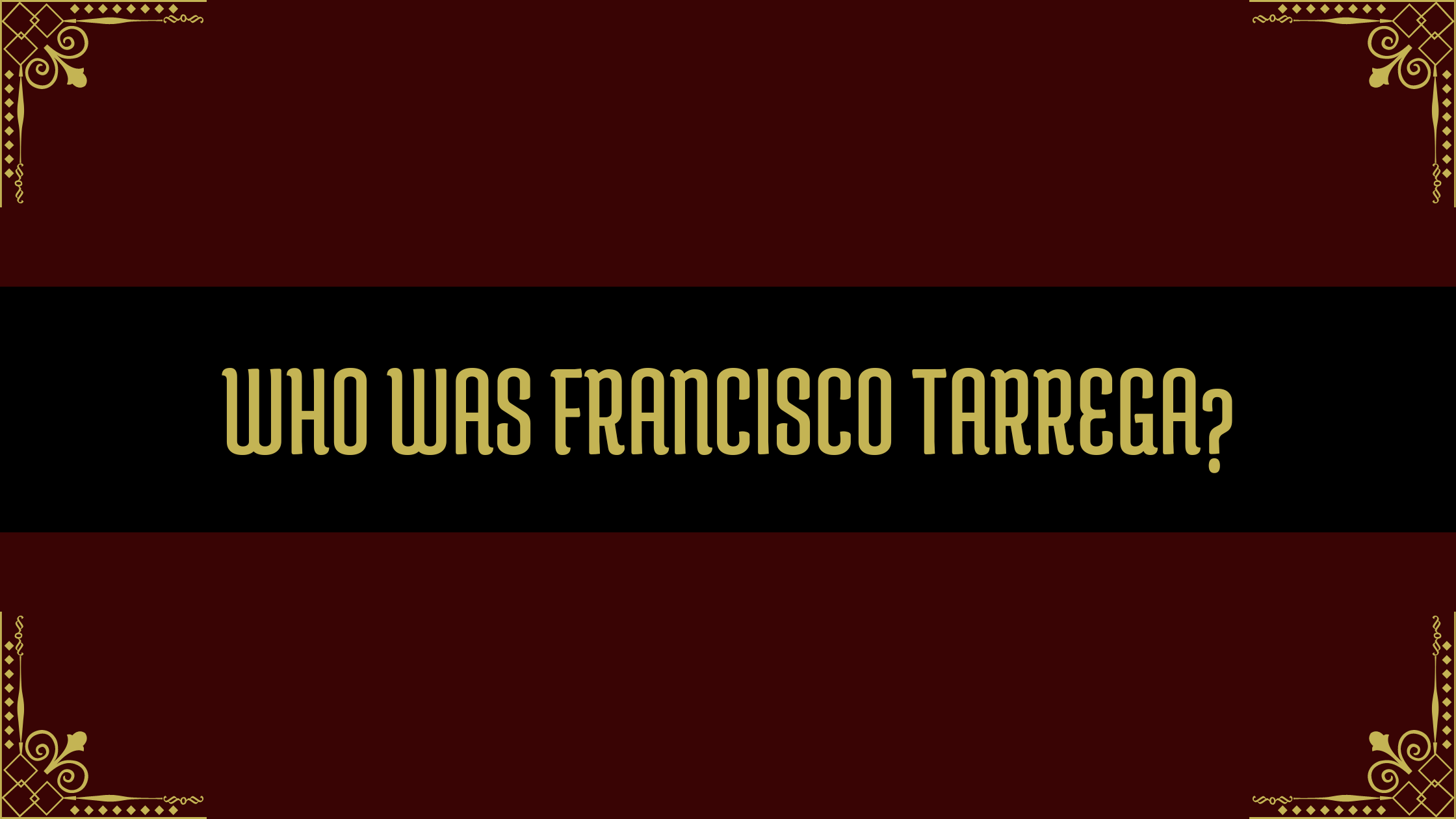Who was Francisco Tarrega?
For a modern day’s classical guitarist, he’s definitely one of the most influential composers and classical guitar players and masters: he was very prolific in his compositions, that are today categorised in the late Romantic period but sometimes seen as a Modern era composer, and was also a very skilled player that always had its name preceeded by an aura of fame and prestige thanks to his talent and also the compliments of other esteemed guitar masters such as Isaac Albèniz.
His most famous works are definitely Capricho Arabe (Arabic Caprice, translated in English) and Recuerdos de la Alhambra, that features a quite challenging tremolo technique that is hard to get and definitely way harder to master, and both of those pieces are very popular and also very respected in the classical guitar community and in conservatories and music school.
In this article we’ll talk about the life of this master and also about his pieces and prolific musical composition career.
THE LIFE AND CAREER
Francisco de Asís Tárrega Eixea (his full name) Tárrega was born on November 21, 1852, in Villareal, Spain.
As a child he had an injury at his eyes because he ran away from the nanny of his family and fell into an irrigation channel, reporting several injuries as well as eye damage, but this didn’t stop the passion for the guitar that he had gained by listening to his father that (according to some sayings) was a flamenco player: he started taking lessons from Eugeni Ruiz, a blind guitarist, and in 1862, the touring guitarist Julian Arcas recognised and praised the musical talent of the young Tarrega.
This praise was also followed by an encouragement to follow up the early guitar lessons with his own lessons, and the father allowed that with the condition of getting piano lessons as well (at the time piano was considered a more respected instrument compared to the guitar, seen as an support instrument for singers).
He then entered into the Madrid Royal Conservatory in 1874 and while studying here, he received a guitar from a wealthy merchant that “sponsored” him, and that guitar was made by the luthier called Antonio Torres, and he was fascinated by the potential of such a high-quality model of guitar.
Actually, he was so stunned by the great sound that it was capable to produce that he thought about the high potential of such a similar articulated sound and started to focus even more on the guitar itself (so far his playing and lessons also had a quite important presence of piano playing and piano lessons), and after this new focus the Conservatory professor of composition Emilio Arrieta convinced him to mostly focus on the stringed instrument.
After years of studies at this school, Tárrega eventually began with his teaching career and also started to perform regularly and also travel in different spanish cities with his concerts: he was also starting to play his own compositions, and after a concert he met his future wife, Maria Rizo.
In this period he was also starting to transcribe pieces made for other instruments, mostly for his students and for teaching purposes alone.
In 1885 he then settle in the city of Barcelona with his wife Maria: in these following years he will compose some of his most famous works, like “Recuerdos de la Alhambra,” written after being hosted in the house inside Granada city, house of another rich patron, the wealthy Concepción Gómez de Jacoby.
From late 1880s up to 1903 he mostly performed and traveled only within Spanish cities (expect for some travels to other Countries, for example the visit of Algiers city where he heard a repetitive drum rhythm pattern that will inspire him to compose another one of his most famous songs, “Danza Mora“.
In 1903 he did a tour in Italy performing in Rome, Naples and then Milan, but his concerts were suddendly stopped by a paralysis of his right body: he then returned to playing at concerts and composing but he never recovered completely.
He then finished “Oremus”, the piece that was his last composition, on December 2nd of 1909 and then he passed away on the 15th of December, only 13 days later, at the age of 57 full years.
MOST FAMOUS GUITAR COMPOSITIONS
His most famous works are definitely:
- Capricho Arabe;
- Recuerdos De La Alhambra
- Danza Mora
His original compositions, though, are 19, and he composed approximately 80 pieces including studies, preludes and other popular dances arrangements, as well as about 120 trascriptions from piano (as he was also a skilled pianist thanks to his education on this instrument before deciding to go completly into the classical guitar area), violin and the opera repertory.
WHERE TO FIND TARREGA’S MUSIC SCORES?
If you’re interested and you want to see some of his scores and songs you can check out the section about him on Imslp (click here and go to the archive with his pieces).
CONCLUSION
Francisco Tarrega was definitely one of the most influential composer in the Romantic period (even if that was at its final years during the life of this guitarist) and he left a very important heritage for the future classical guitarists newcomers, so the nickname of “Father of the guitar” is definitely well deserved for this master.
RELATED ARTICLES
- Best classical guitars under 500$: nylon string instrument for beginners
- Free and paid music sheet sites online for musicians
Proxy seller for music producers
Best B2B cold email list provider for people reaching out to music producer agents

